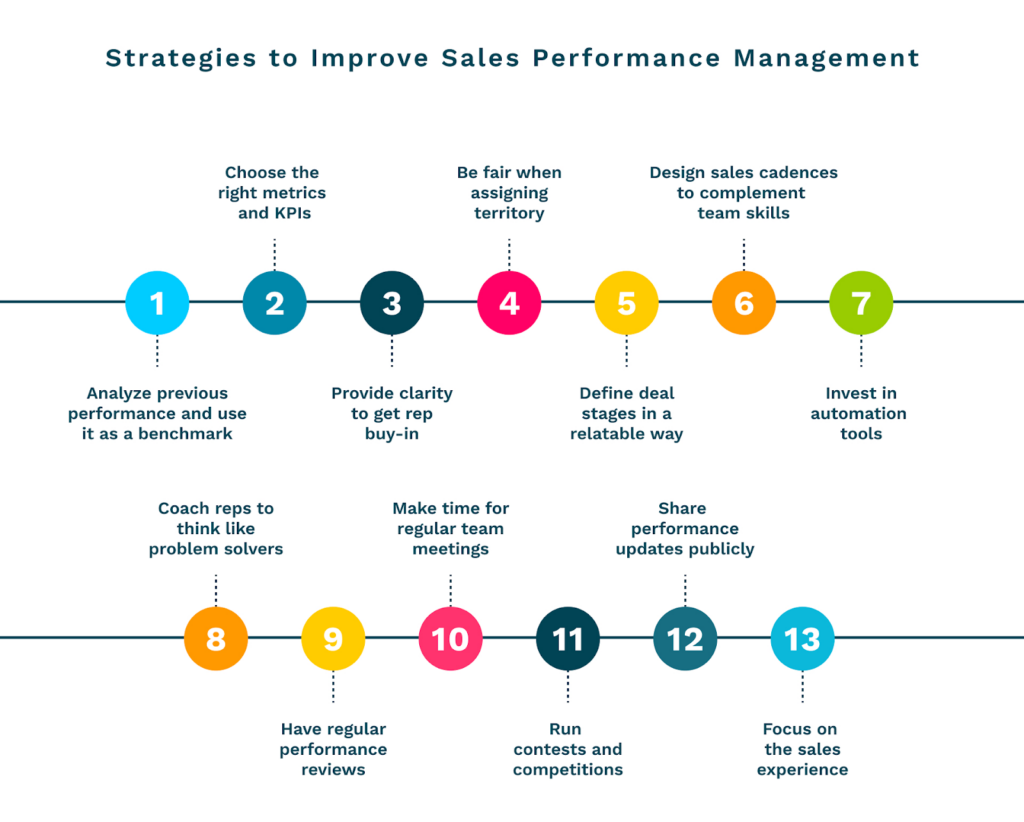
How to Build a Sales Planning Guide
Learn practical tips to boost your sales with Nektar's sales planning guide – turbocharge your revenue and achieve your business goals!
For a sales team to work, they need to have clear and realistic targets. Whether you’re a seasoned sales professional looking to refine your strategies or a business owner aiming to boost revenue, a well-crafted sales plan can provide realistic targets and optimal strategies.
The sales team should know where they are going before they can hit their key targets. The sales planning process allows them to break down these big goals into smaller ones and identify strategies.
Let’s look at what sales planning is, the importance of sales plans, the sales planning process, the elements of the sales planning process, and some examples of sales planning templates.
What is Sales Planning?
Sales planning is the strategic process through which an organization sets specific goals, defines strategies, allocates resources, and outlines actions to achieve its sales targets and objectives.
The sales planning process involves predicting the sales volume you aim to attain and detailing a strategy to achieve your objectives. A sales plan encompasses historical sales data, potential challenges, market dynamics, your intended audience, and strategies for both prospecting and sales activities.
Some examples of sales planning include product launch strategy, territory planning, sales goals, lead generation plan, new market entry, and partner channel strategy.
Importance of Sales Planning
Over fifty percent of sales professionals fail to meet their sales targets each year. Sales professionals attribute this subpar figure to insufficient strategic preparation and the inability to synchronize sales objectives with market realities.
Optimal sales outcomes only materialize through effective planning and readiness. A meticulously crafted plan simplifies sales responsibilities, subsequently boosting the efficiency and productivity of sales teams.
Sales planning assists your team in the following ways:
- Familiarize themselves with target demographics and business strategies for market entry.
- Predict potential challenges and equip themselves to overcome them.
- Comprehend the roles they need to perform optimally and the resources required for their tasks.
- Maintain organization and concentrate on critical aspects, enabling them to progress towards sales goals and collective objectives.
- Adapt sales strategies and techniques in response to market shifts.
Steps to Creating a Sales Planning Process
The sales planning process involves systematically outlining sales objectives, strategies, and tactics to achieve revenue goals. It encompasses market analysis, segmentation, strategy definition, tactical planning, budget allocation, sales team organization, performance metrics establishment, and execution to align sales efforts with business objectives.
Step 1: Conduct a SWOT analysis
Conducting a SWOT analysis involves qualitatively evaluating both your company’s strengths and weaknesses, as well as examining the opportunities and threats within the market and industry you operate in. This evaluation provides insights into your business’s present condition and potential future scenarios.
Step 2: Set clear sales goals
The process begins by defining specific, measurable, achievable, relevant, and time-bound (SMART) sales goals. These goals could include revenue targets, market share objectives, or customer acquisition numbers.
Step 3: Forecast future numbers
Sales teams predict future sales performance using historical data, industry trends, and market insights. This involves estimating sales volumes, identifying seasonal trends, and accounting for external factors influencing sales.
Step 4: Allocate resources
Based on the forecasted sales targets, organizations allocate resources such as budget, personnel, technology, and tools to support the sales initiatives. This ensures that the necessary resources are available to achieve the defined goals.
Step 5: Create a sales strategy
Moving forward in the sales planning process involves creating a sales strategy. This phase entails determining your approach to engaging customers, crafting your intended message, and devising methods to effectively deliver these messages. Additionally, think about the essential tools and resources your sales team requires to perform their tasks proficiently.
Step 6: Establish a sales budget
At this juncture, it’s opportune to contemplate your sales budget. Collaborate with your team to ascertain the required expenditure and devise strategies for its efficient allocation. Budgeting also facilitates comprehension of the necessary investments to optimize your endeavors.
Step 7: Specify measurement metrics
Metrics play a pivotal role in assessing the results of your strategy; thus, it’s imperative to establish them before commencing plan execution. It’s crucial to have a comprehensive grasp of the significance of each metric, enabling you to make informed decisions based on their insights.
Now that we have gone through the various steps in the sales planning process let’s look at the various elements involved in a sales template.

Elements of a Sales Planning Template
A sales planning template is a framework or structure that provides a systematic and organized approach to creating a sales plan. It typically includes sections and fields that guide businesses through the process of outlining their sales objectives, strategies, tactics, and resources. Sales planning templates are designed to help sales teams and businesses ensure that important aspects of their sales strategy are not overlooked.
A comprehensive sales planning template typically includes the following elements:
- Executive Summary: An overview of the sales plan, summarizing its key objectives, strategies, and expected outcomes.
- Business Overview: An introduction to the company, its mission, vision, and core values.
- Market Analysis: Detailed examination of market trends, customer segments, competition, and opportunities.
- SWOT Analysis: Assessment of the company’s strengths, weaknesses, opportunities, and threats.
- Sales Goals and Objectives: Clearly defined and measurable sales goals, such as revenue targets, market share, or customer acquisition numbers.
- Sales Strategies: A description of the strategies to be employed to achieve sales goals, including approaches to customer engagement, product positioning, and market penetration.
- Target Audience and Personas: Identification of the specific customer segments and buyer personas that the sales efforts will focus on.
- Sales Tactics and Activities: Detailed plans for executing sales strategies, including prospecting methods, lead generation, and sales techniques.
- Resource Allocation: Allocation of resources such as budget, personnel, technology, and tools to support the sales initiatives.
- Sales Forecasting: A projection of future sales performance based on historical data, market trends, and other relevant factors.
- Performance Metrics and KPIs: Clearly defined key performance indicators (KPIs) that will be used to measure progress toward sales goals.
- Sales Budget: Detailed financial plan outlining the budget allocated for sales activities and associated expenses.
- Timeline and Milestones: A timeline indicating the duration of the sales plan and important milestones along the way.
- Communication Plan: Strategies for internal and external communication related to the sales plan, including stakeholder engagement and reporting.
- Risk Assessment and Mitigation: Identification of potential risks and challenges that could impact sales performance, along with contingency plans to address them.
- Adjustment and Review Process: Procedures for regularly reviewing and adjusting the sales plan based on performance and changing market conditions.
- Roles and Responsibilities: Clear delineation of responsibilities for each team member involved in the sales process.
- Appendices: Supplementary information, data, and supporting documents that provide additional context or details.
A well-structured sales planning template integrates these elements to create a comprehensive and actionable plan that guides the sales team toward achieving their targets and contributing to the overall success of the business.
Examples of Sales Planning Templates
Sales planning templates are of paramount importance as they offer a standardized roadmap for crafting effective sales strategies. These templates provide a ready-made framework that ensures essential components are systematically addressed, enhancing the overall quality and coherence of sales plans.
Templates are often designed based on industry best practices, enabling businesses to leverage proven strategies for optimal results. Sales planning templates contribute to more focused, organized, and successful sales initiatives.
1. Asana sales template
The sales template provided by Asana ensures that all individuals are in harmony with the sales strategy. Moreover, it allows for monitoring the advancement of all tasks within a unified location.
2. The 30-60-90 day plan
This detailed sales strategy aims to enhance your company’s sales in just three months. It presents a potent template encompassing all the methods and approaches to be utilized over the 90-day period. This customizable template is available for download through your chosen software platform.
3. One-page plan by Best templates
An additional sales strategy from Best Templates can assist you in devising potent approaches for amplifying sales. Moreover, it can be tailored to your preferences – simply access and modify it through your favored software application, as long as it supports MS Word or Pages file formats.
4. Sales plan by Hubspot
The complimentary sales strategy template provided by HubSpot is a comprehensive blueprint containing various segments to enable you to articulate your sales approach in an uncomplicated and logical way. It comprises segments for your team arrangement, intended audience, corporate background, objectives, financial allocation, implementation strategy, and numerous others. This straightforward template streamlines the presentation of your sales strategy for your team and management.
5. Online ales template by Venngage
With the Sales Plan Maker from Venngage, you can generate and arrange your sales strategy. To begin, you must establish a Venngage account and select the sales plan template that aligns with your preferences. Venngage provides the capability to incorporate visuals, modify text, or craft visual representations and tailored graphs.
Invest in Clean Data to Boost your Sales Planning Process
Clean data is pivotal in the Sales Planning Guide, forming the foundation for accurate decision-making. Accurate customer information, up-to-date sales activities, and reliable market data enable businesses to identify trends, segment markets, and allocate resources strategically.
A sole weak point can impact the management of your sales performance. While Salesforce boasts considerable power, it cannot rectify inaccuracies or gaps in data. The aim is for your sales representatives to focus on increasing sales rather than getting bogged down in CRM updates.
Nektar addresses this disparity by:
- Automating the collection of contact details and sales activities.
- Real-time updates of contacts and the composition of buying committees.
- Facilitating precise monitoring of your sales pipeline for enhanced coverage.
- Enhancing forecast precision and highlighting stagnant deals.
- Supporting training and development through insights from deal progress and customer engagement data.
Nektar transforms your data into an active asset. Reach out to us today to discover more!
PUBLISHED BY






